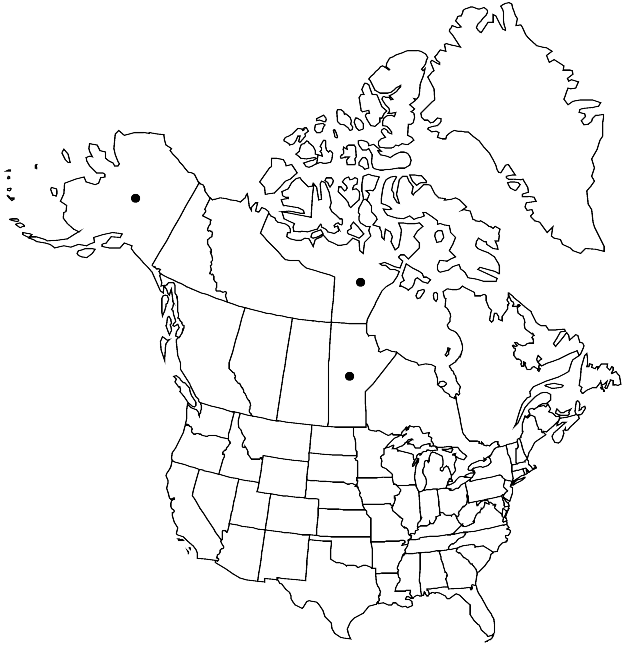Difference between revisions of "Sarmentypnum trichophyllum"
J. Hattori Bot. Lab. 100: 133. 2006.
FNA>Volume Importer |
FNA>Volume Importer |
(No difference)
| |
Revision as of 19:46, 24 September 2019
Plants medium-sized or large, green, brown, or when emergent above water surface with red secondary pigment. Stems with branch and often shoot apices ± pencil-like by long-acuminate leaves; epidermal cells not widened, or occasionally in small parts (less than 10% of circumference) slightly widened; axillary hair distal cells 2–7, brown when young. Stem leaves ovate to triangular, gradually narrowed to apex, straight or sometimes falcate, concave; base not decurrent; margins denticulate; apex long- or usually very long-acuminate; costa short- or long-excurrent (excurrent portion to 1/3 leaf length); alar region from margins to costa.
Habitat: Submerged or floating in mineral-rich water, small lakes, water-filled kettle holes, ox-bows, small aquatic habitats
Elevation: low to moderate elevations (0-300 m)
Distribution

Man., Nunavut, Alaska, n South America (Colombia), n Eurasia.
Discussion
Sarmentypnum trichophyllum is occasionally reminiscent of S. exannulatum, but the distinctly pencil-like branch and shoot apices, excurrent costa and long, brown axillary hairs when young (shorter and normally hyaline in S. exannulatum) separate it. For the differences between S. trichophyllum and Drepanocladus longifolius, see discussion of the latter. Sarmentypnum trichophyllum has been reported from many areas of Canada (R. R. Ireland et al. 1987); however, it seems to be widespread only in western Alaska, and few specimens from outside this area have proved to belong to this species. The species was reported from two localities in Greenland by G. S. Mogensen (1995), but those specimens are S. exannulatum. In northern Europe, S. trichophyllum has been found at higher altitudes (750 m), and there is no reason to assume that the species is restricted to lower elevations in North America.
Selected References
None.